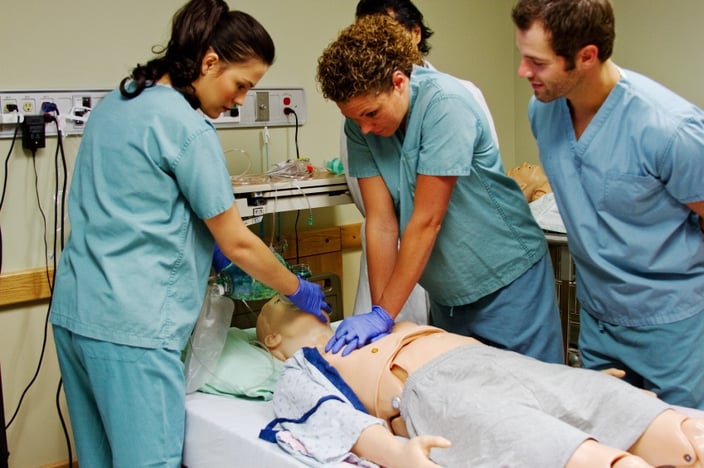
The call was to a shooting; no other information was provided. You arrive to find a gunshot wound to the mouth, self-inflicted, the shotgun still warm, the patient still conscious. A last minute flinch sent the blast careening through the patient’s cheek – a survivable wound, if you can keep the airway clear. But with heavy bleeding and massive tissue destruction, maintaining a patent airway is going to be tricky. You better have your suction ready.
Trauma patients are always complicated. Even with an isolated wound, the ripple effects of traumatic injury can produce hidden dangers for your patient. So let’s discuss some of the factors involved in suctioning the patient with a traumatically injured airway. It begins with your equipment.
Equipment Readiness:
- Always begin with an efficient, reliable portable suction device. It should have large, easy to read dials that can be manipulated in the tight confines of emergency scenes and be powerful enough to handle an exsanguinating patient.
- Make sure your equipment is fully charged and ready to go.
- Check your equipment daily, to insure that you have an assortment of tips and that the unit is running properly.
Special Considerations in the Trauma Patient
Trauma patients are complicated. Unlike cardiac or diabetic emergencies, trauma can involve any and all bodily systems. And when trauma impacts the airway, it adds another level of complexity to your treatment regime. Blood, tissue, mucous, and vomit may be profuse in traumatic injuries. Suctioning may be your only option to clear an injured airway, so here are a few things to keep in mind:
- Patient positioning – the majority of trauma patients will involve spinal immobilization, which severely limits positioning to clear the airway. Once the patient is securely packaged, the board can be tilted to accommodate drainage and aid in suctioning.
- Airway positioning – when cervical injuries are suspected, which they should be in any type of blunt trauma or trauma above the level of the clavicles, use the ‘chin lift’ or ‘jaw thrust’ to keep the airway open while suctioning and until an oral airway can be inserted.
- Airway limitations – with traumatic injuries, the use of adjuncts may be limited due to destruction of the oral cavity or lack of visibility due to heavy bleeding/tissue damage. Suction may be your only option to keep the airway clear.
Monitoring Your Patient during Suction
Suctioning, like any intervention, is a treatment that requires care and attention. And like any treatment, it comes with risk. Carefully monitor your patient as you suction the airway, for complications can arise. Here are a few reminders about basic suctioning. Not everything on the list is possible if the patient’s airway is severely traumatized or the flow of blood and fluid is overwhelming, but it represents good, basic practice:
- Preoxygenate your patient using 100% oxygen for at least 30 seconds prior to suctioning
- Position the patient cautiously, maintaining spinal immobilization when necessary
- Limit suctioning to ten seconds or less, to prevent hypoxia
- Monitor the EKG for dysrhythmias, signs of ischemia, or rate changes that may result from suctioning
- Use pulse oximetry to monitor oxygen saturation levels
- Check blood pressure often and regularly
- Monitor end-tidal CO2 through Capnography
- Keep the defibrillator handy, just in case
Suction is one of the most basic, yet essential means of managing the airway. And when it comes to traumatic injuries, it may be one of the few options available. Remember, there are no absolute contraindications for suctioning in patients requiring clearing of the airway, so be sure your equipment is ready, your patient prepped, and you remain vigilant throughout the suctioning treatment.















